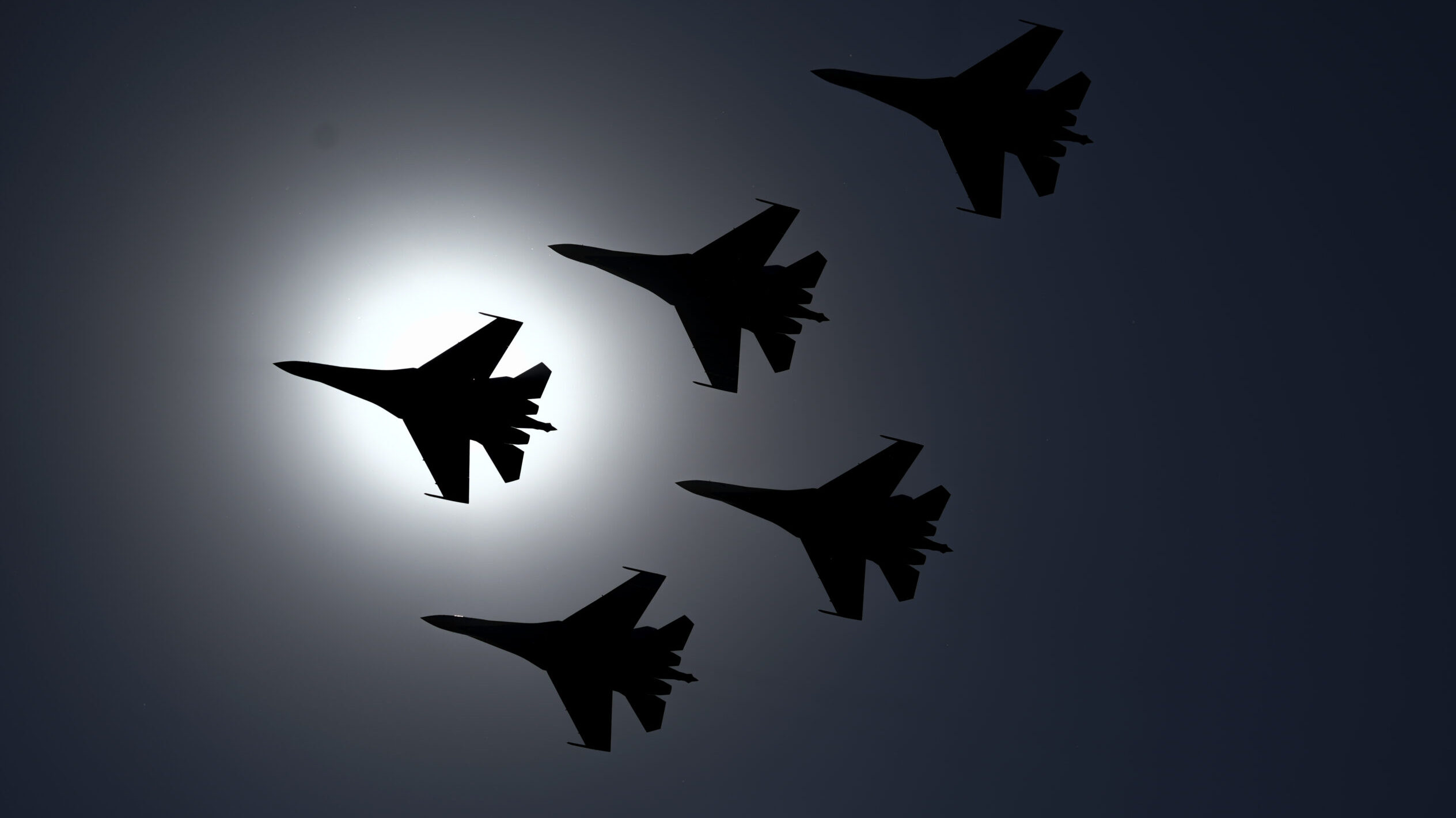
Sukhoi Su-35S aircrafts perform during the International Military-Technical Forum “Army 2022” at Kubinka military training ground in Moscow, Russia on August 17, 2022. (Photo by Pavel Pavlov/Anadolu Agency via Getty Images)
BEIRUT — Iran has finalized a long-awaited deal with Russia to procure Sukhoi SU-35 fighters, attack helicopters and military trainer aircraft, according to a senior defense official cited by local news agency Tasnim today.
“Plans have been finalised for Sukhoi Su-35 fighter jets, [military] Mi-28 attack helicopters, and Yak-130 jet trainers to join the combat units of Iran’s Army,” Iran’s deputy Defense Minister Mehdi Farahi reportedly told the outlet.
The Russian government does not appear to have confirmed the agreement, and other Iranian officials in months past have claimed the Sukhoi transfers, in particular, were a done deal. The new report doesn’t say how many of each aircraft are involved, but media outlets have reported as many as 24 Sukhoi fighters could be in the mix.
“Iran has sought for years to acquire a capable air-to-air and air-to-ground combat capability. Its aircraft are mostly a mix of either Russian aircraft, a Shah-era aircraft from the United States, France, and aircraft that flew over from Iraq,” David Des Roches, associate professor at the Near East South Asia Center for Security Studies, told Breaking Defense. “When Saddam Hussein fell, they have focused most of their airborne power projection on surface-to-surface missiles.”
He added that an air-to-ground capability would bolster Iran’s conventional forces in a way that their asymmetric missiles have done for their unconventional capability. But, he said, it’s unclear how well Russian aircraft produced amid the war in Ukraine might fare.
“I think that Iran is likely to be disappointed with what they get right now. [It] appears as though Russian industry is operating at maximum capacity. And we’re starting to see [falling off] in quantity and quality of the product produced based on anecdotal evidence from the battlefield for Ukraine,” Des Roches said.
Moscow also may be wary of allowing any advanced tech on the jets to fall into the wrong hands, should an Iranian-operated aircraft be captured, Des Roches said.
“I think Russians will export a dumbed down version with less capability, particularly in the terms of electronic warfare, and defense from missiles. The missile defense components of this are likely to be not desirable from an Iranian perspective,” he said.
Still, he said Iran would welcome the Russian aircraft to enhance their combat capabilities compared to regional rivals like Saudi Arabia or the United Arab Emirates or, most importantly, Israel.
“What they want to have is a regional standard air-to-air capability that will allow them to deter Israeli air-to-air capability. Right now the only threat Israel has in air operations from Iran is from ground-to-air. And then I think the second thing is that they want to be able to have an effective and significant air-to-ground capability that can be used in support of Iranian ground forces if they find themselves in a conventional war,” he said.
US officials have watched warily as Iran and Russia have tightened their relationship since Moscow’s invasion of Ukraine. The US says Iran has provided Russian forces with hundreds of unmanned aerial vehicles [PDF], for instance, used to attack Ukrainian cities.
Last month Russian Foreign Minister Sergei Lavrov was welcomed to Tehran by Iranian President Ebrahim Raisi, where Lavrov praised the two nations’ “traditionally trusting atmosphere.”
Last week the White House said it was “concerned” that Iran could “go a step further” and provide Moscow with ballistic missiles for use in Ukraine. In return, White House spokesperson John Kirby said, Russia was offering Tehran “unprecedented defense cooperation” including missiles, electronics and air defenses. He did not mention aircraft at the time.
Air Force awards SNC $13B contract for new ‘Doomsday’ plane
The win is a major victory for the firm in a competition that saw the surprise elimination of aerospace giant Boeing.


























